Yakutethnoexp. Part IIIFebruary 28 — March 3, 2011 Real Yakuts have real Russian names. Marfa Spiridonovna and Matryona Nikiforovna at every turn. Russians’ preferences for names have long changed, but the Yakuts remain true to tradition. VilyuiskMapI desperately wanted to visit this place. I thought I’d see the vestiges of an old Russian city, old houses, quaint streets. Turns out, Vilyuisk is just a big village that makes even Bobrinets look like New York by comparison. 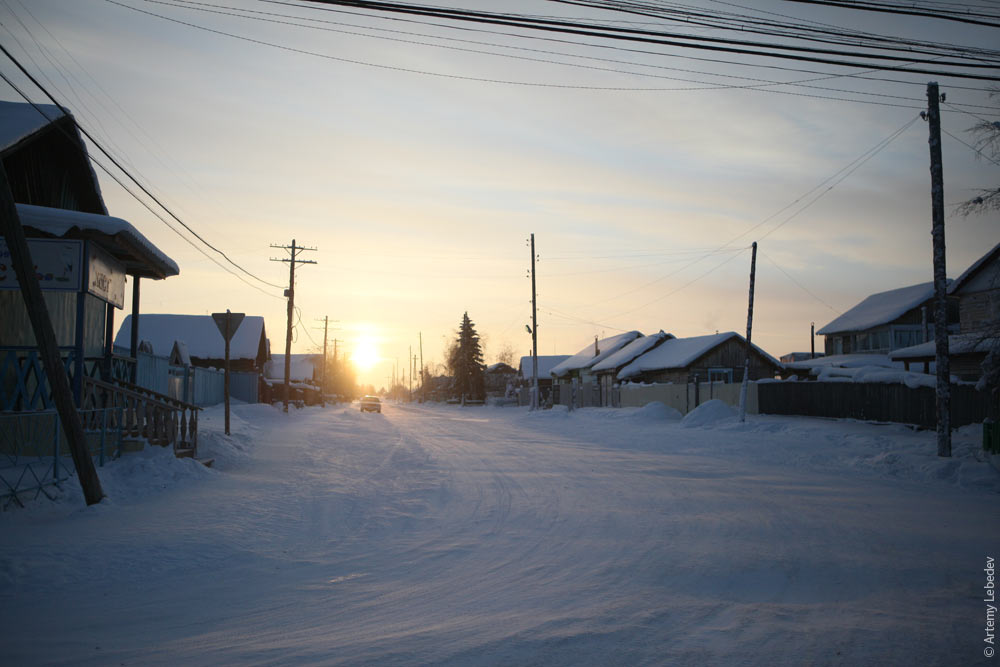 Like everywhere else in Yakutia, no one bothers to take down the Victory Day banners in Vilyuisk. May 9th is bound to come once a year anyway, so the banners will become relevant again. 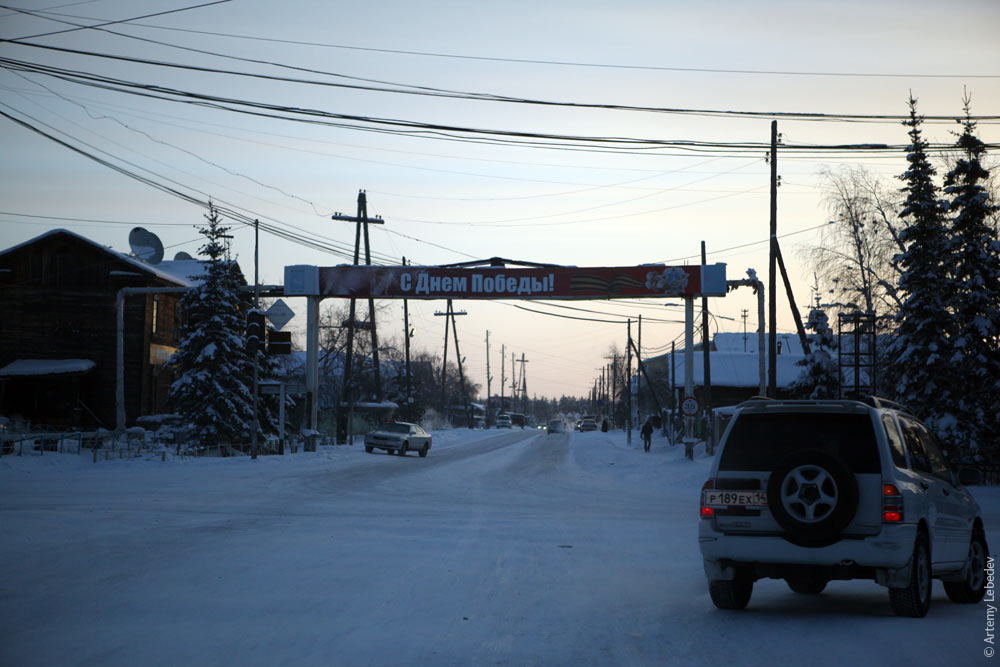 Happy Victory Day! The police unleash their creativity. 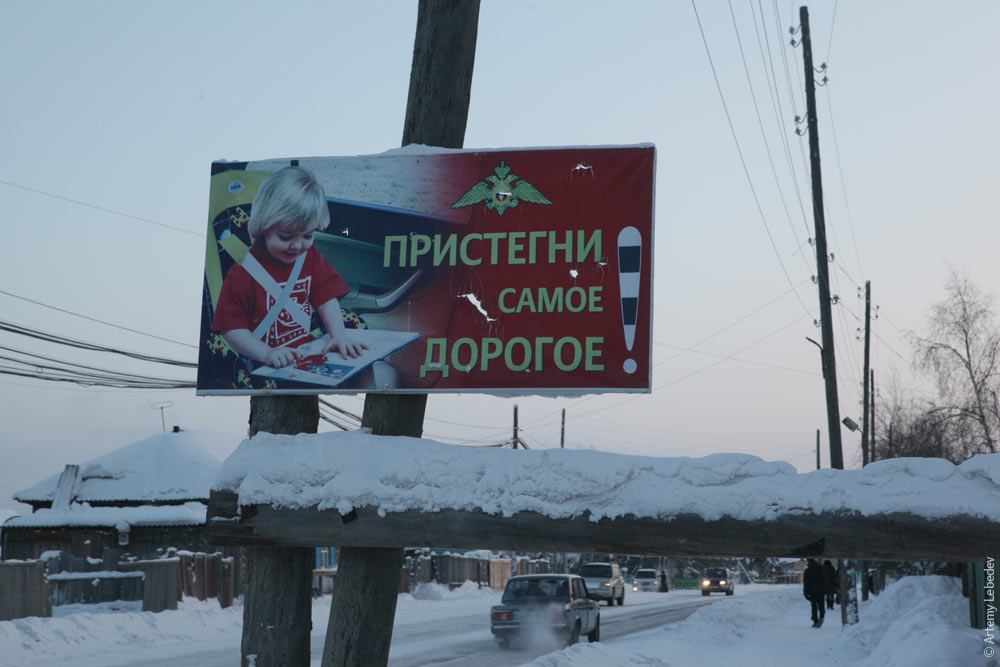 Buckle up your dearest! The side of a Highway Patrol car bears the State Automobile Inspection acronym instead—a common occurrence in Yakutia. 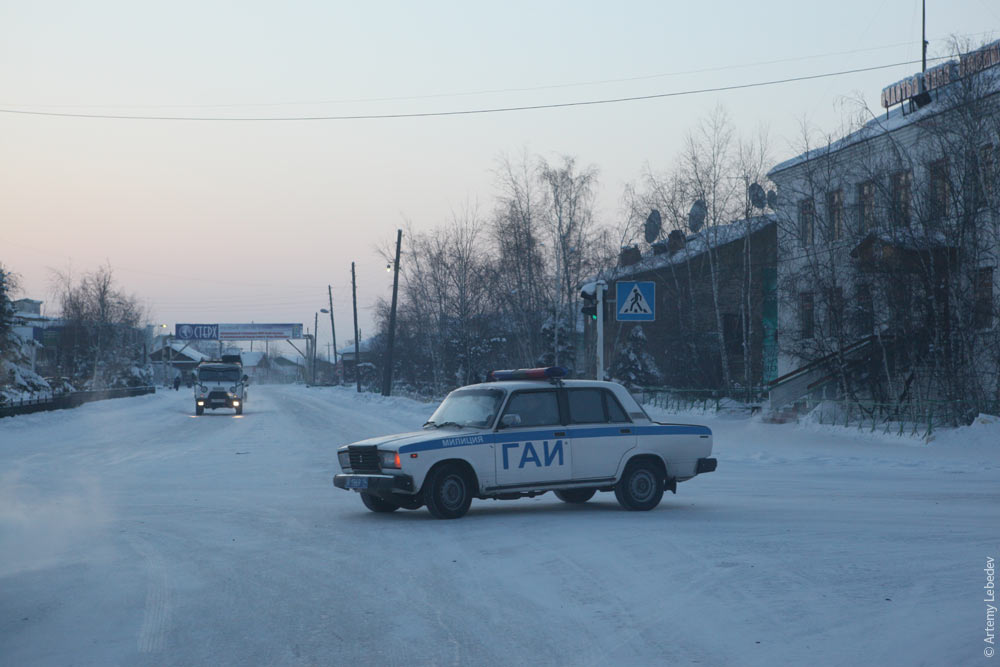 The famous 19th-century Russian writer and revolutionary Nikolai Chernyshevsky spent some time in exile here. The building where he did his time no longer exists. 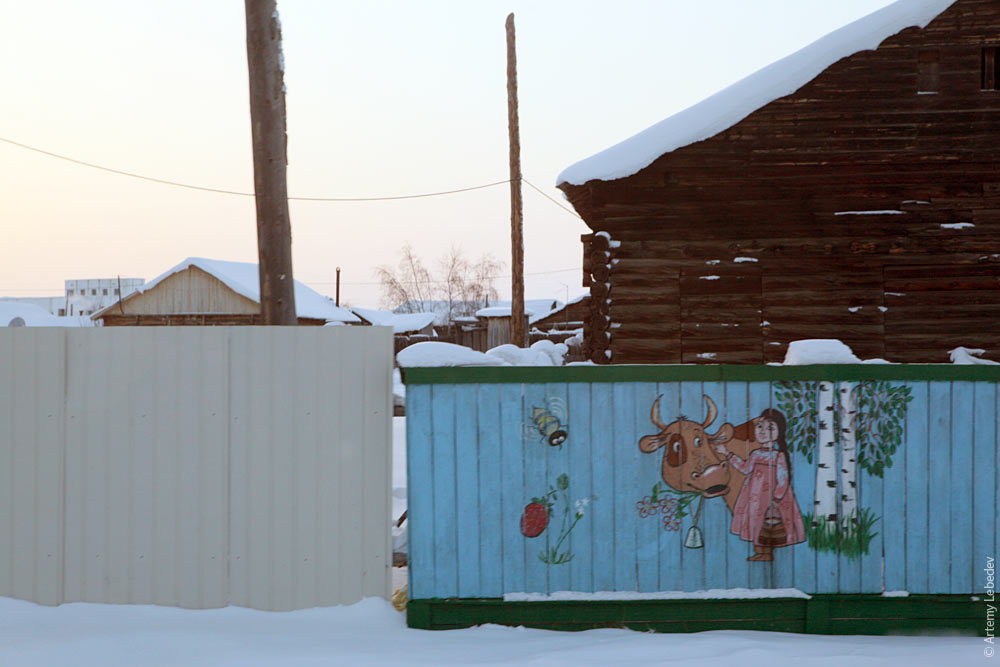 What is to be done. 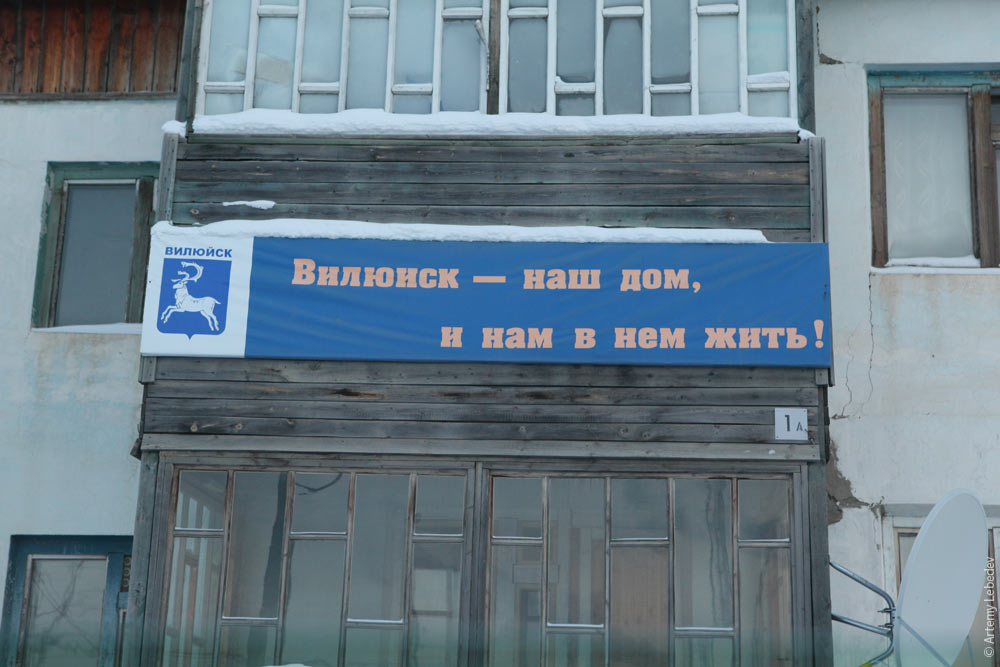 Vilyuisk is our home and ours to live in Put the car in a warm garage for the night. 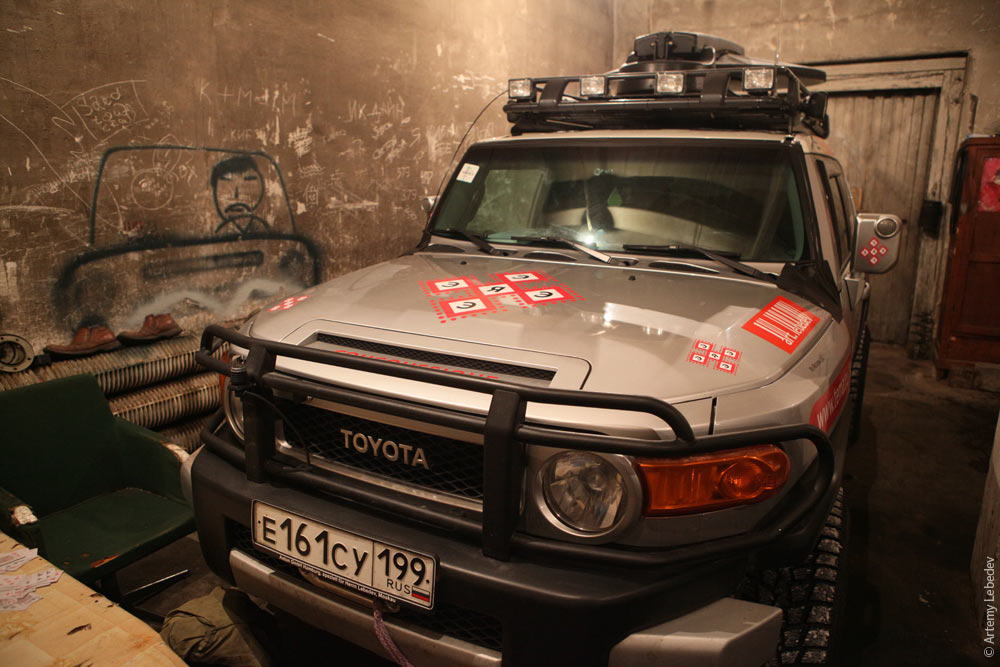 And pray that the handiwork of Vilyuisk autoworkers won’t suddenly surface from under the snow. 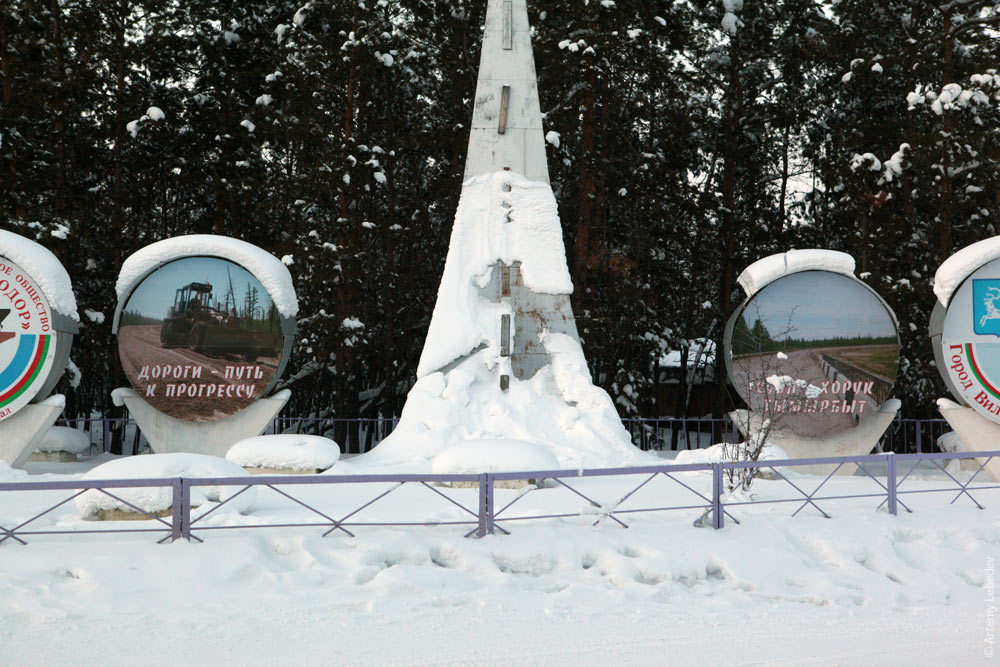 Roads are the path to progress Mirny (Peaceful)MapWhile we were traveling through Yakutia, Russian law enforcers were officially renamed from militsiya (militia) to politsiya (police). On my way into the city, I got pulled over by a police officer for the first and last time, allegedly for speeding. Someone keeps coming up every few minutes to take a photo of Coucousique. People are drawn exclusively by the variety of stickers. They pose their children in front of the car, take photos of one another, set up group portraits. It’s not that hard to get here by car, but vehicles with Moscow plates, much less covered in stickers, are a rare sight in these parts.  It can get quite cold in Mirny. This is why the exhaust pipes on all the buses here come up to the roof. When it’s freezing cold, exhaust fumes tend to hover in one place, which can’t help but dampen the mood of car drivers. But this way the smoke hovers higher up at bus roof level. 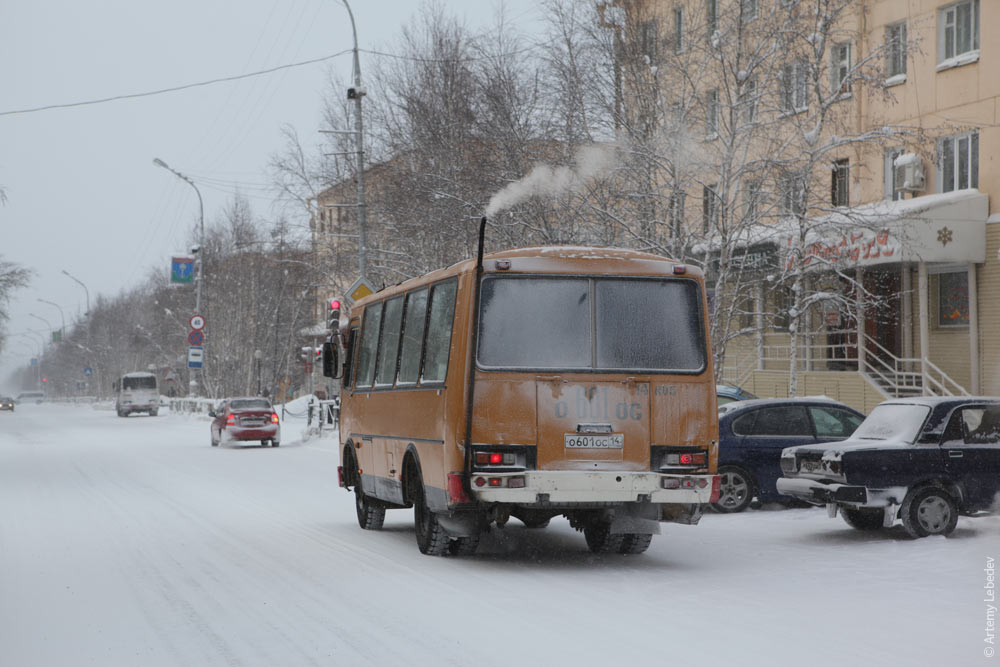 Another testament to how freezing it gets here: double-pane insulated windows in some houses. 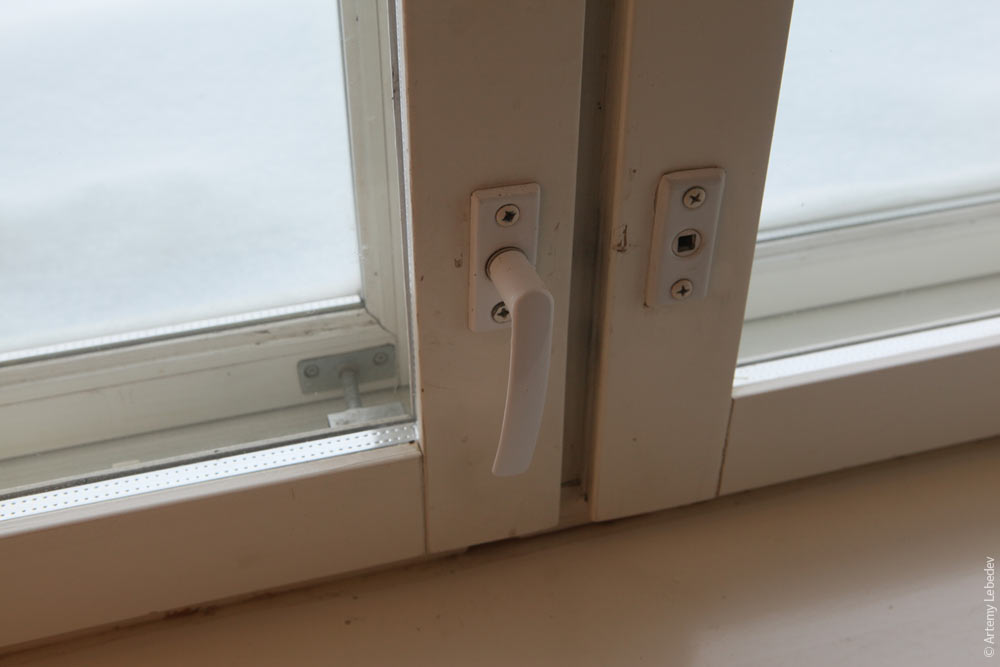 A trash can neck-deep in snow. 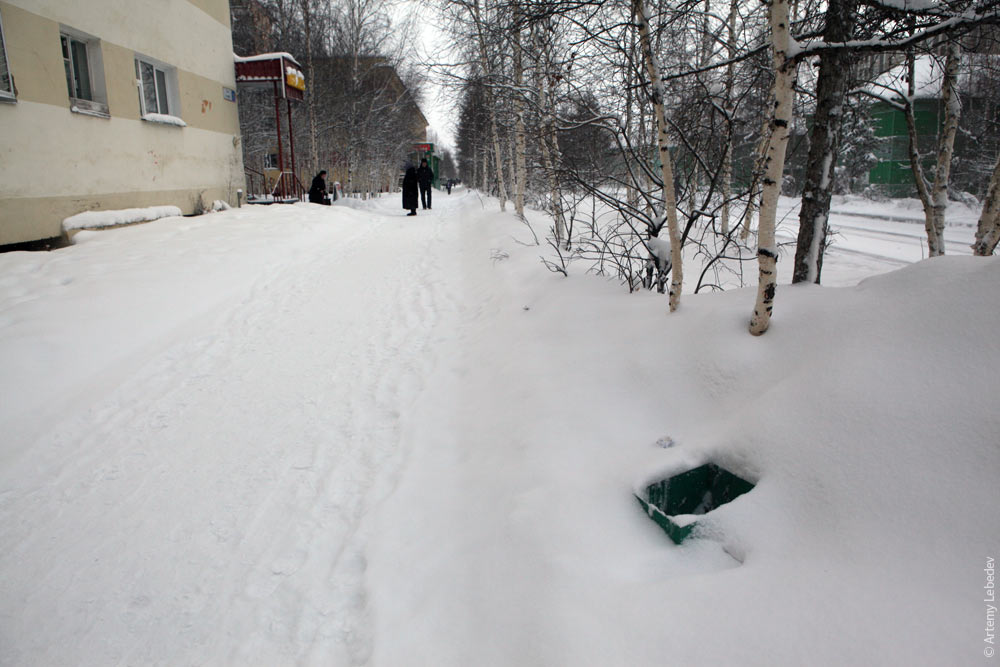 Another trash can.  The trash can at the airport symbolizes a yearning for flight. 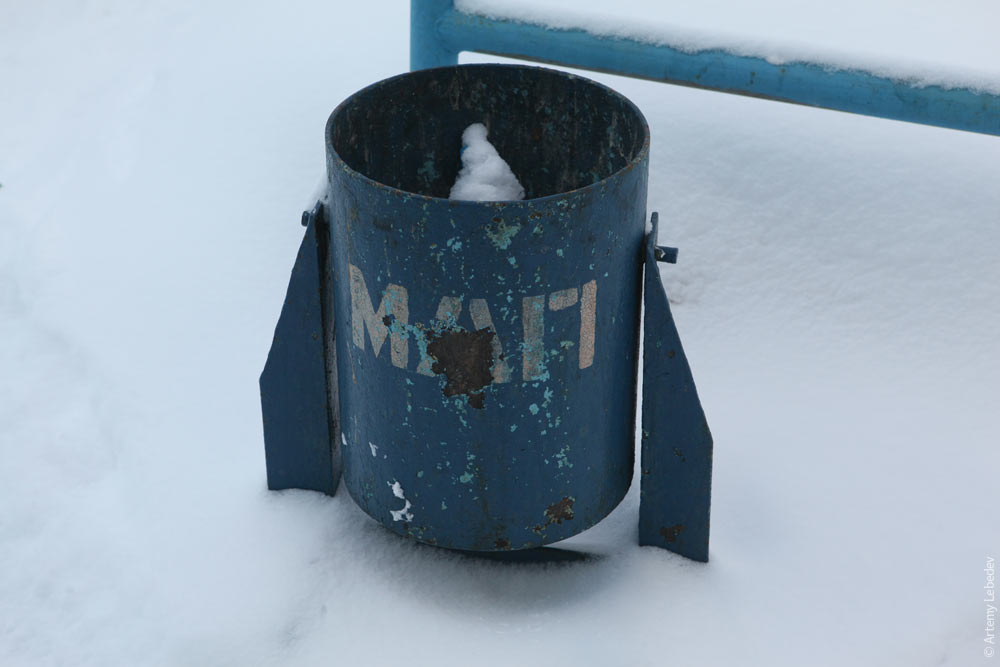 The wooden houses have an interesting feature: the windows at the corners of the building are connected to one another with decorative strips. 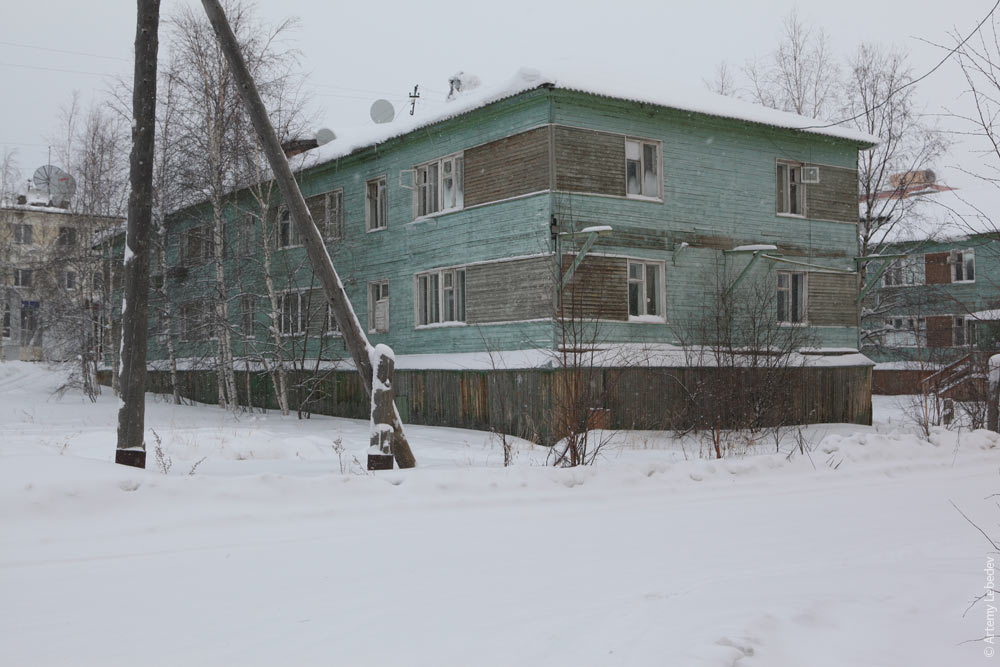 Concrete panel apartment buildings are built on fairly tall stilts. 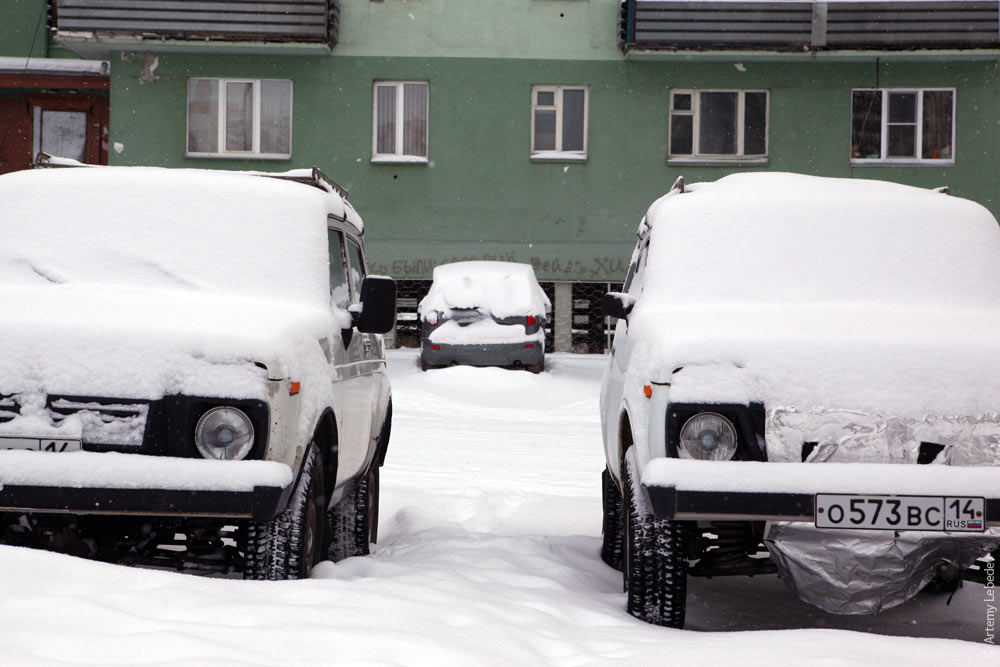 Stilts alone are not enough. Special sealed containers with kerosene are stuck into the ground around the buildings. In the summer, these things ensure proper heat exchange for the building’s foundation. They’re not stuck into the ground at random, but rather in purposefully selected spots. Their shape varies widely. 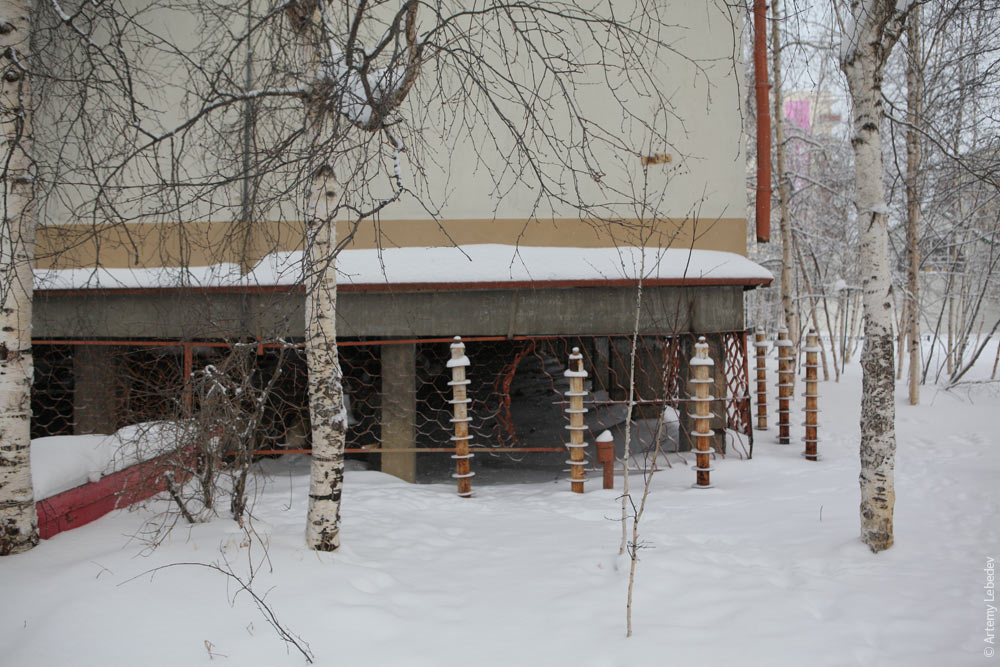 You can tell right away: this is the motherland. 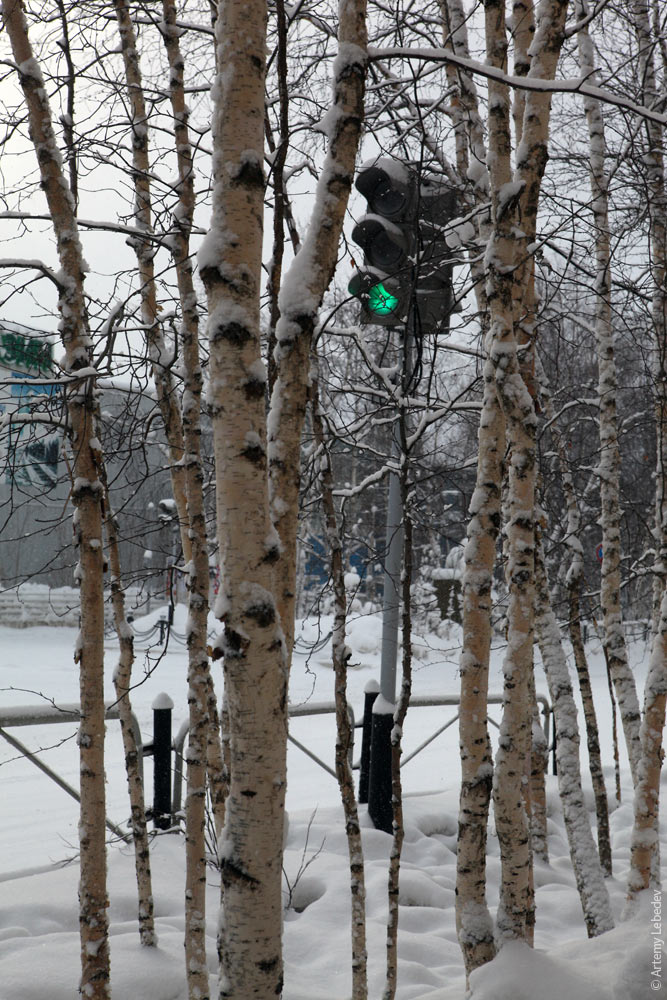 A police call button on the street. 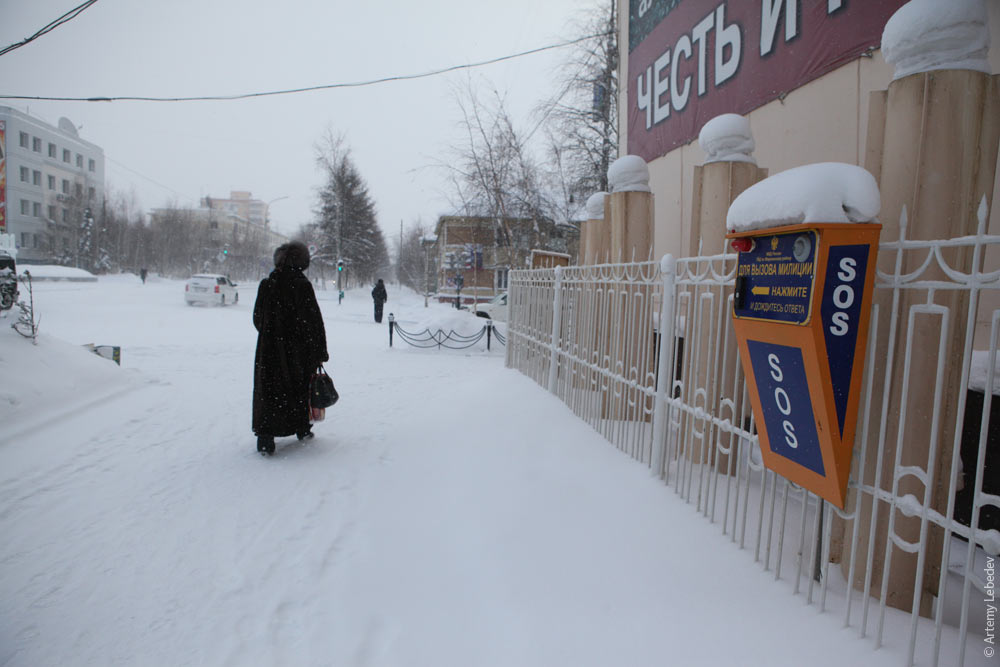 A hamburger full of nouns. 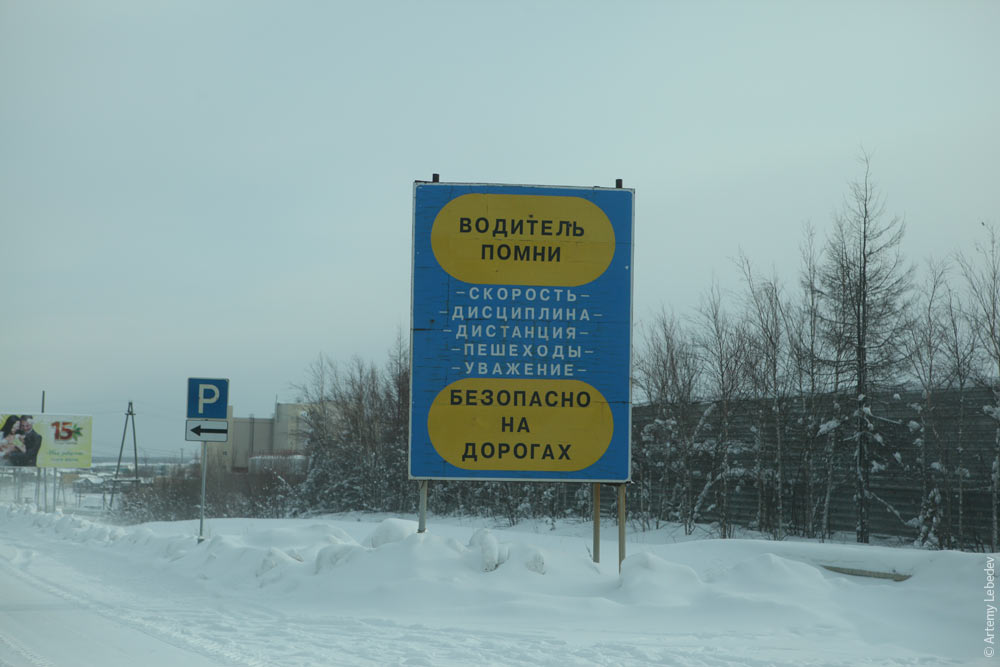 Drivers, remember—speed, discipline, distance, pedestrians, respect—safe on the roads You can’t jump ship if you’re on a submarine. OK. 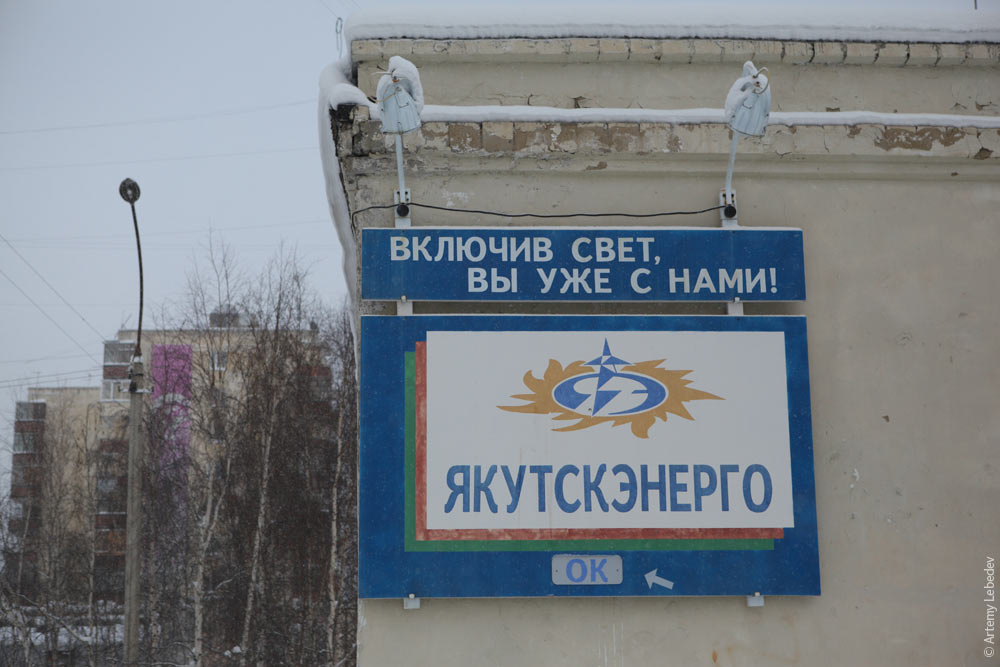 By turning on the light, you’re already with us! Yakutskenergo. OK In the US, every group portrait on an advertisement has to include a black person for the sake of politically correct diversity. In Yakutia, it has to include someone Asian-looking. Even if they have to be photoshopped in over someone else’s head. And even if they don’t look particularly Yakutian. 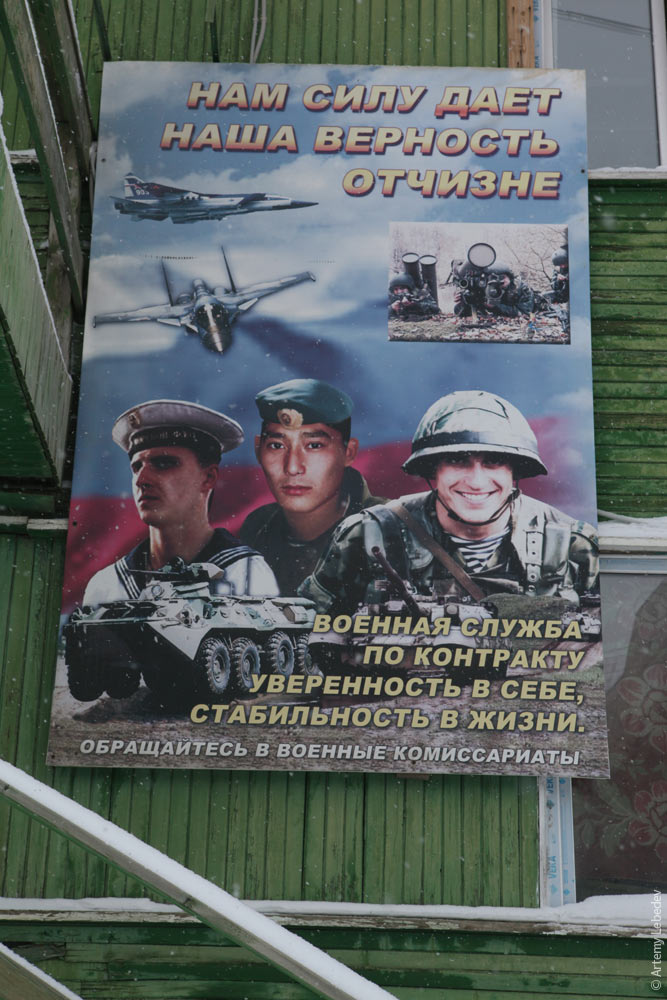 We draw strength from our loyalty to our homeland. Contract employment opportunities in the military. Confidence and stability. Visit your local enlistment office for more information The individuals responsible for the building. In the European part of Russia, the tradition of indicating names of any kind on building facades has been lost. 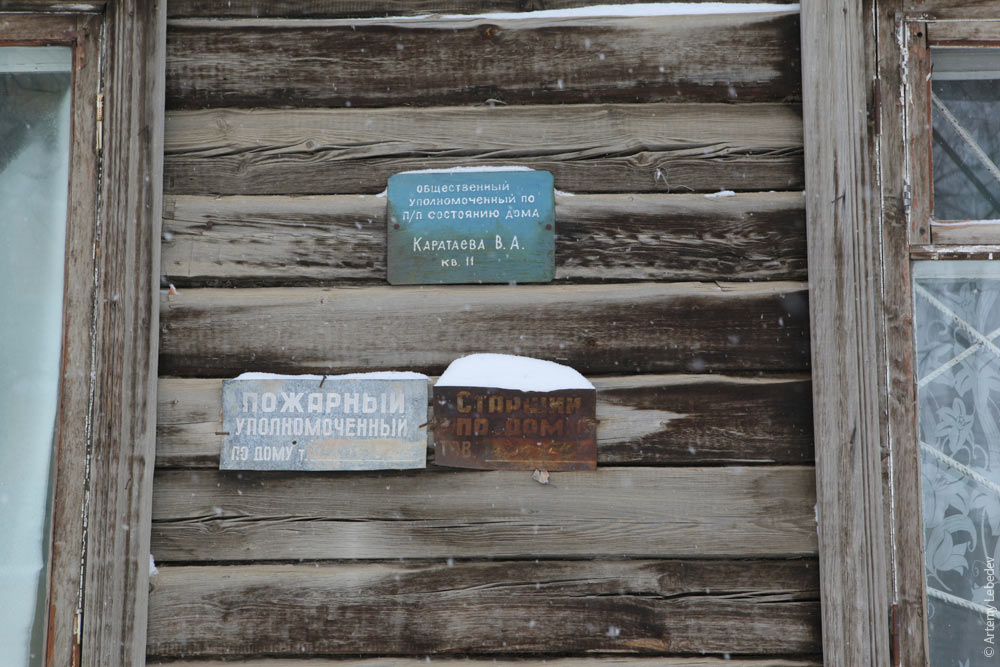 Authorized community fire safety inspector for this building: V. A. Karataeva, apt. 11. Fire warden: comrade ________. Building supervisor: comrade ________ A shoe stall at the market. 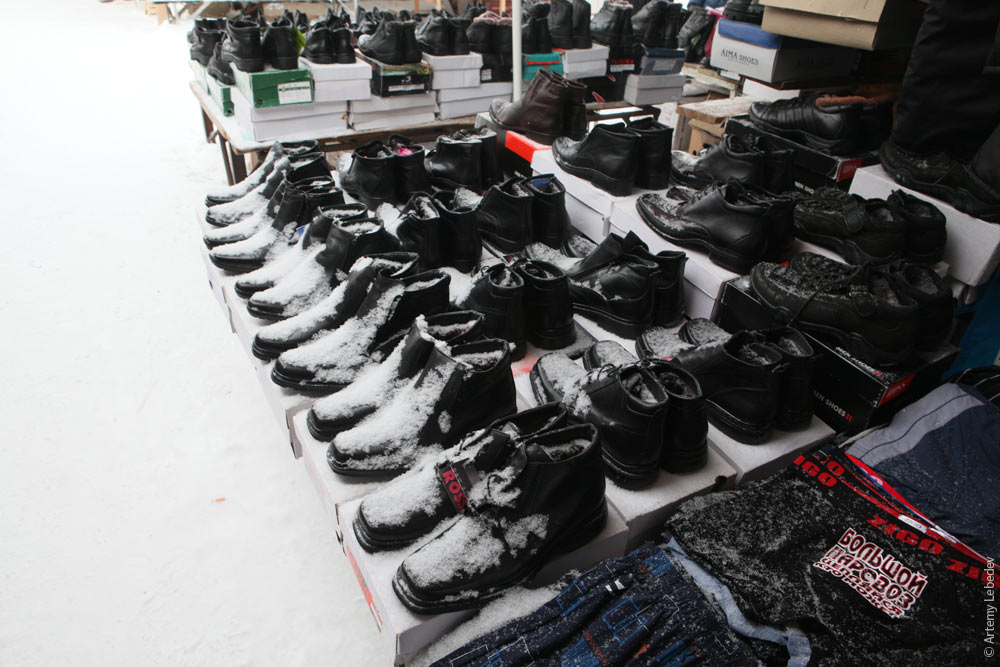 A parking lot. 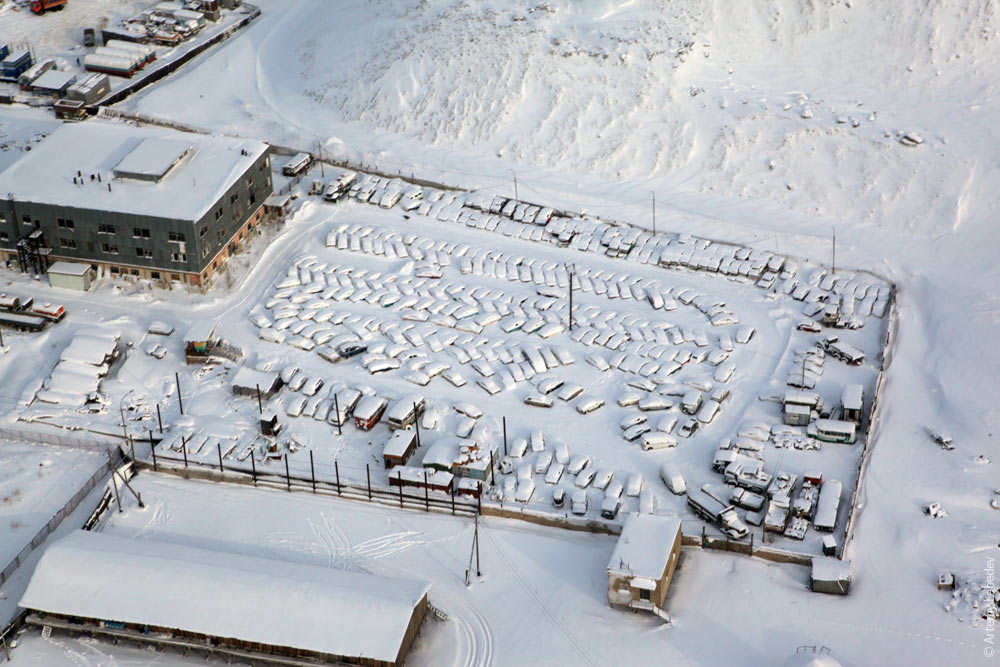 The downtown area of the city. 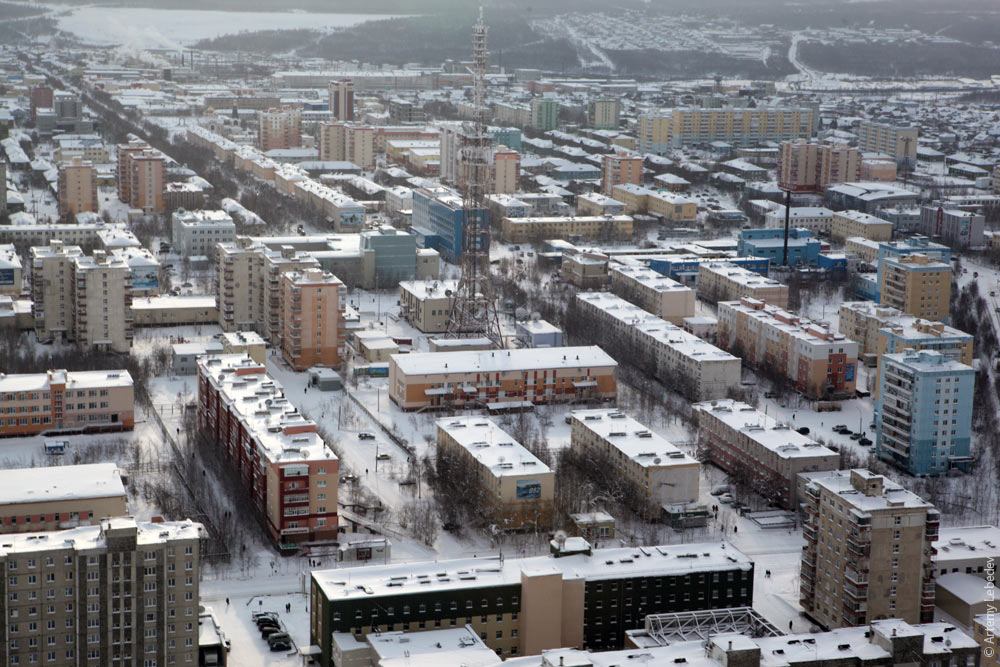 The city.  Mirny’s main landmark, visible even from outer space, is the mined-out crater of a kimberlite pipe. This open-pit diamond mine, 1.5 km in diameter, was in exploitation for over fifty years. 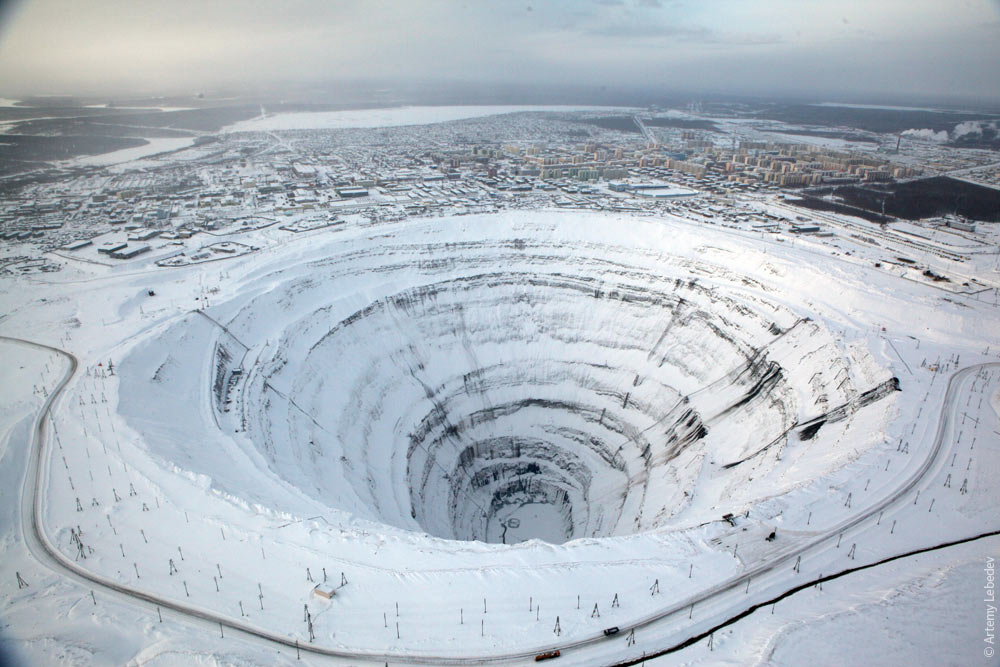 Nowadays all the diamond mining here has moved underground. But the pit will remain next to the city forever. Or rather, the city next to the pit. ChernyshevskyMapThe water doesn’t freeze even though it’s −45 °C outside. There’s a hydroelectric power plant here. 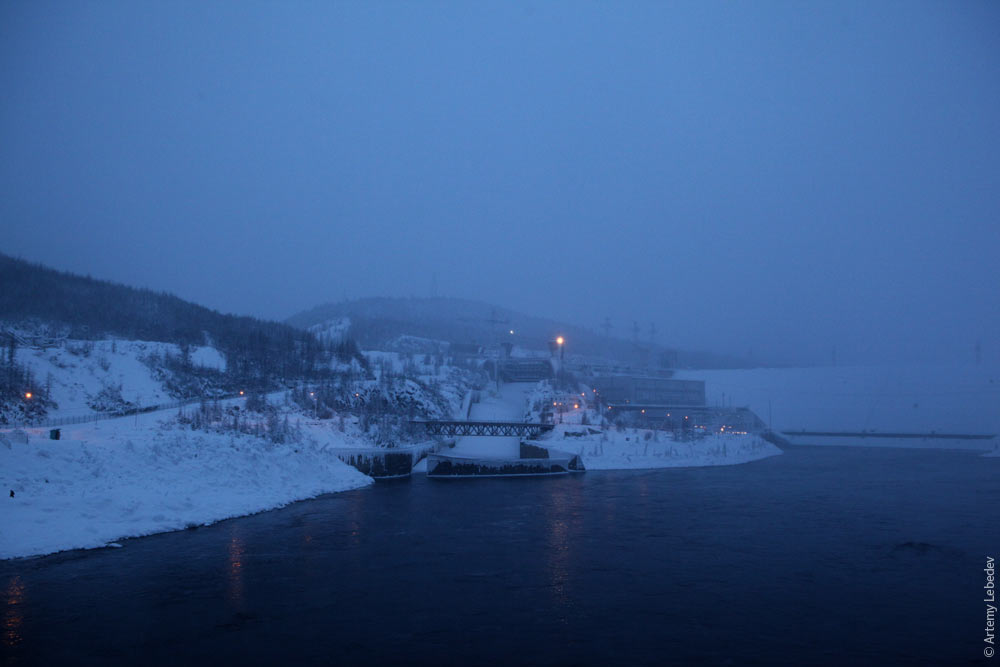 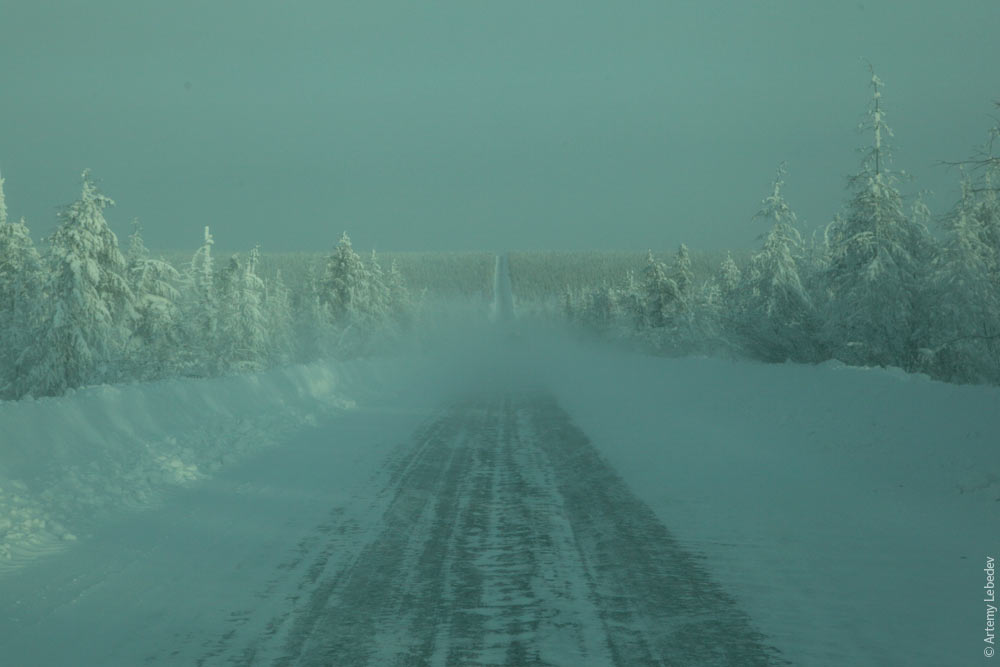 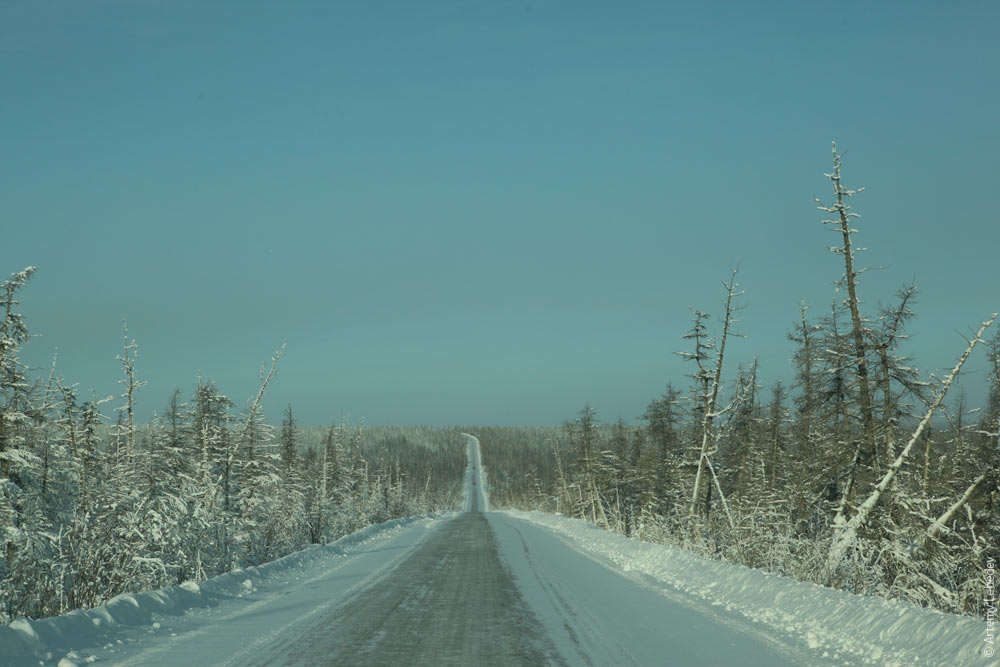 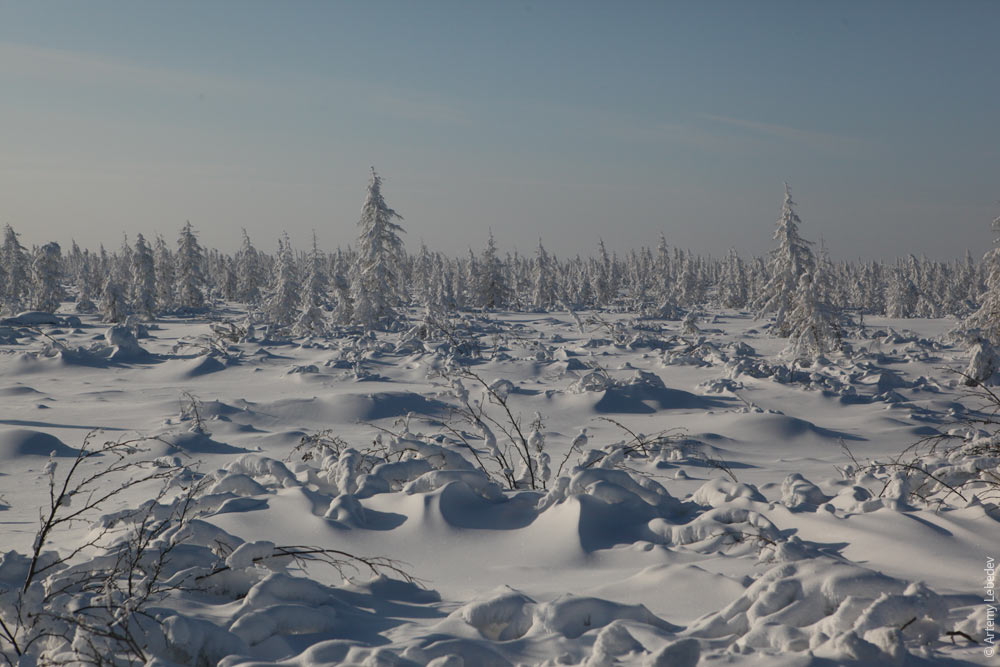 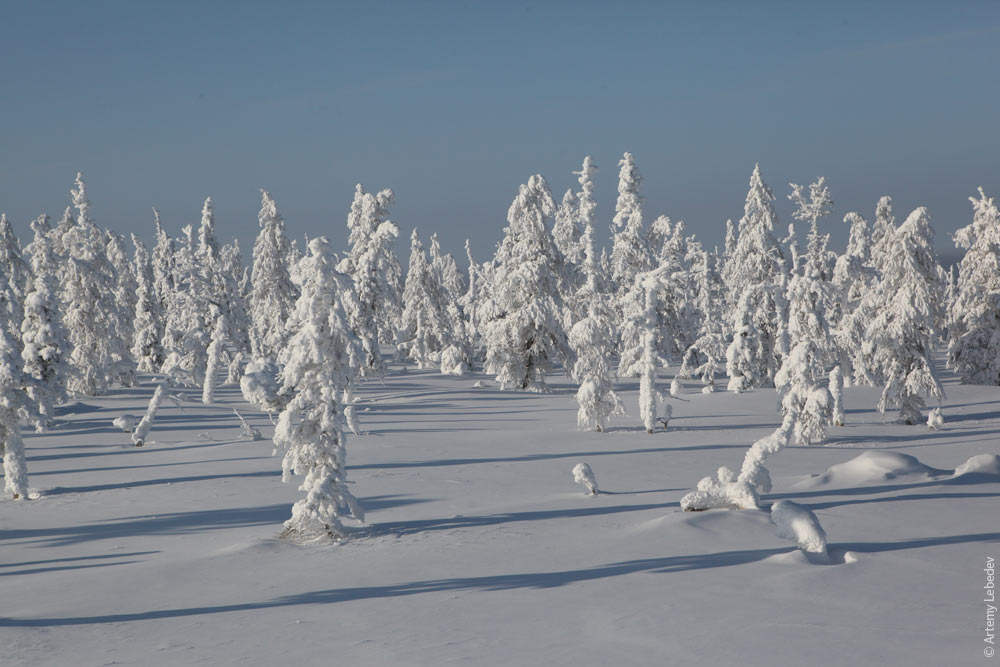 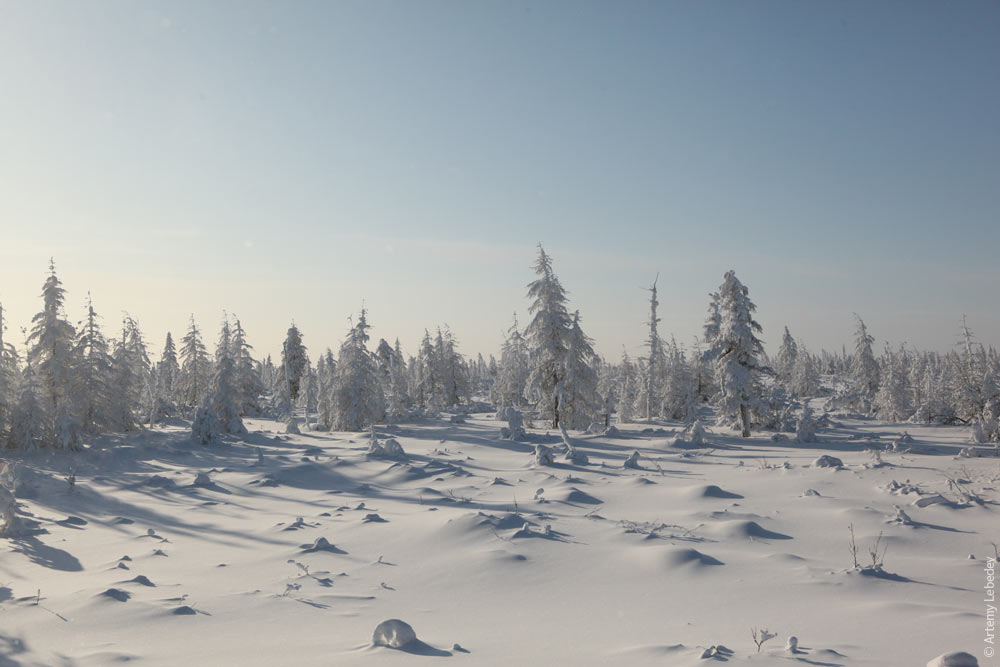 AykhalMapTraffic sign posts are striped here, just like in the Portuguese city of Faro. 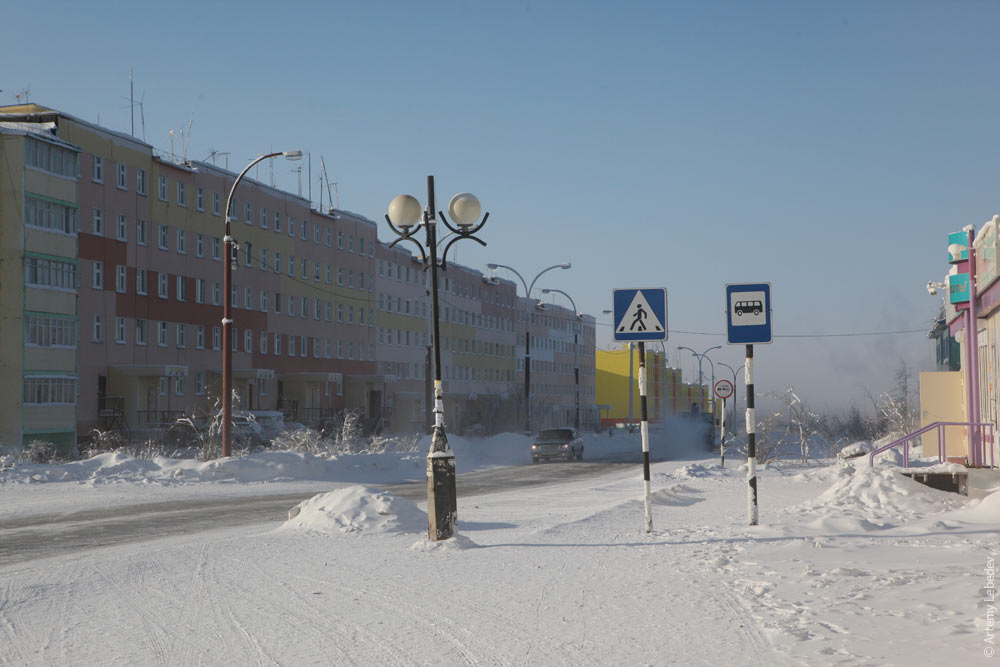 A highly artistic bus stop. 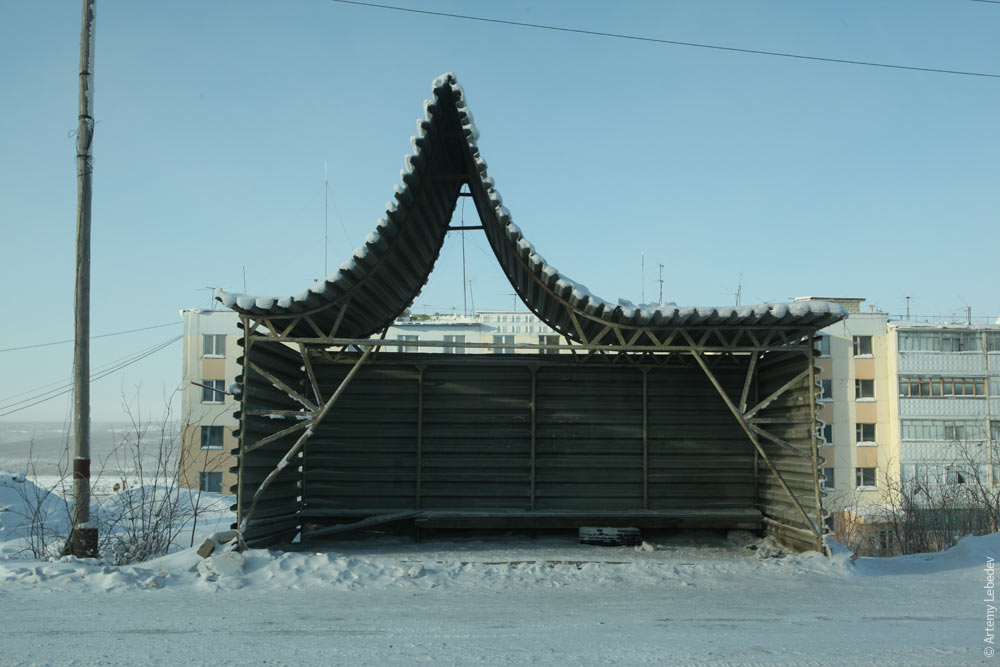 Half the buildings are painted with eye-gougingly bright colors. It’s a big mistake to think that bright colors are the kind of variety that northerners lack in their supposedly scant visual environment. Bright colors only serve as a constant reminder of the fact that nothing good will ever happen in this city again. 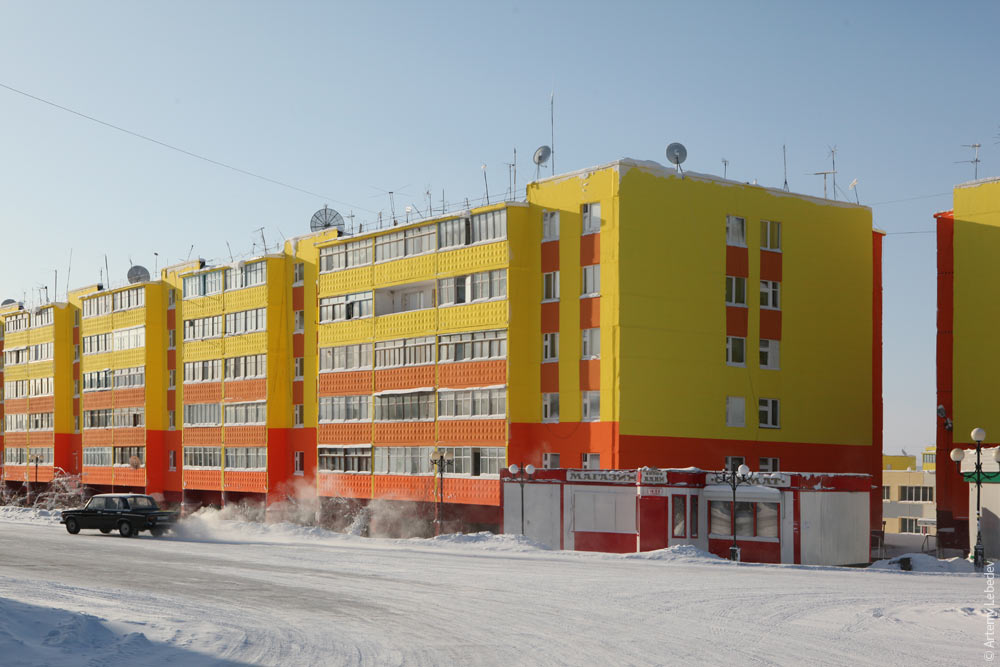 In reality, the unpainted buildings one street over contain much more variety. Of course, this is if you take into account that people look at them for years, and not for the five minutes that the state commission on variety was able dedicate to the matter. 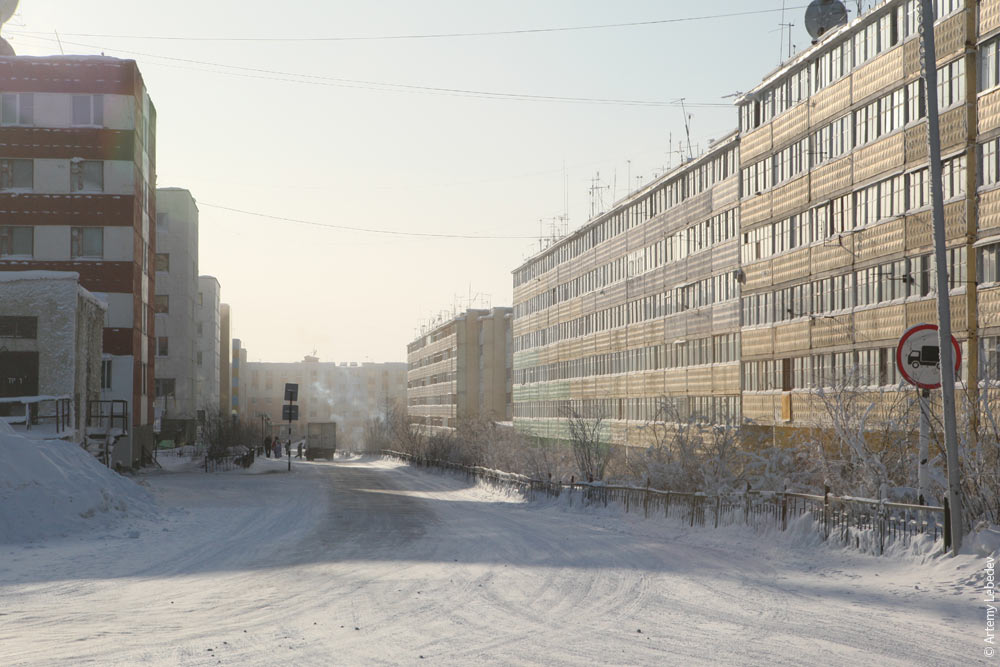 Timid graffiti. 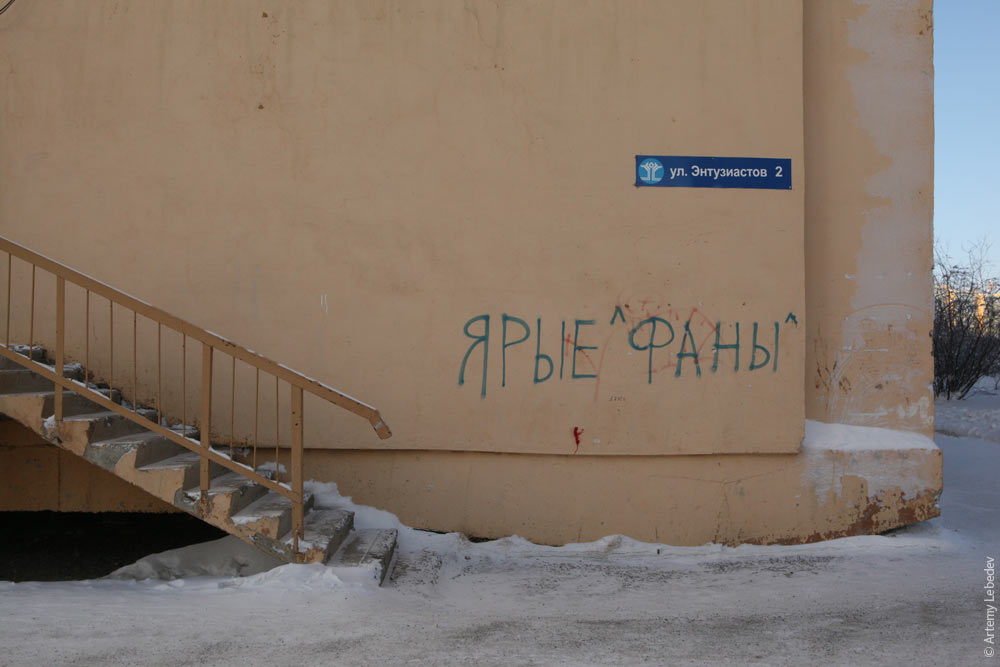 2 Enthusiast St. Zealous ^fans^ Udachny (Lucky)MapIf there’s anything in abundance up north, it’s worn-out haul trucks and mining excavators, which are displayed at the entrance to the mine as a monument. 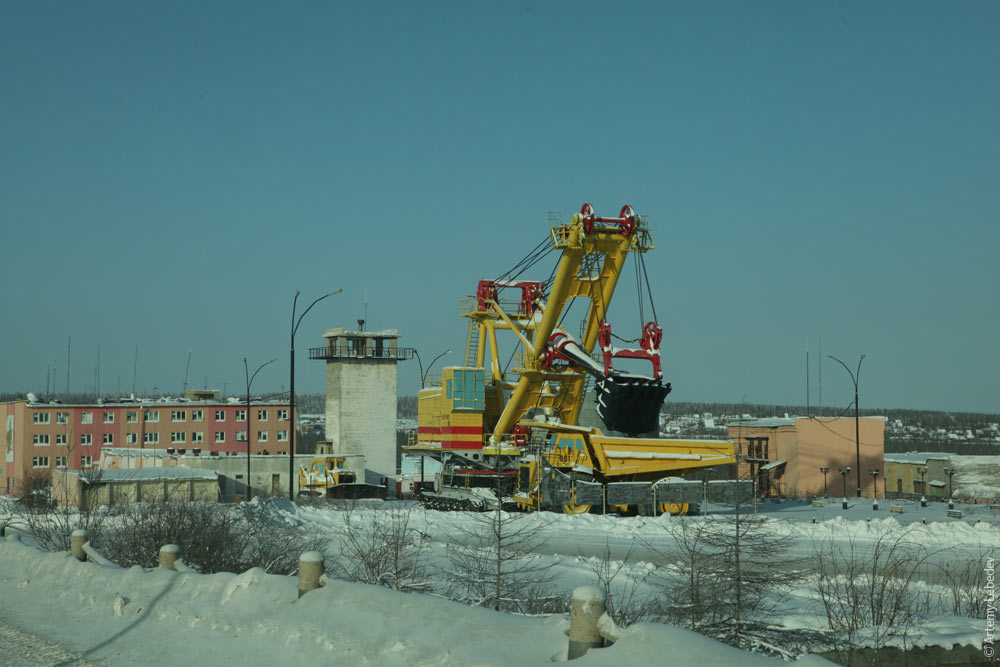 But it’s the all-terrain buses that truly deserve a monument. A cross between a bus and a truck, this vehicle is used primarily to transport the likes of geologists and oilfield workers to and from their job sites. 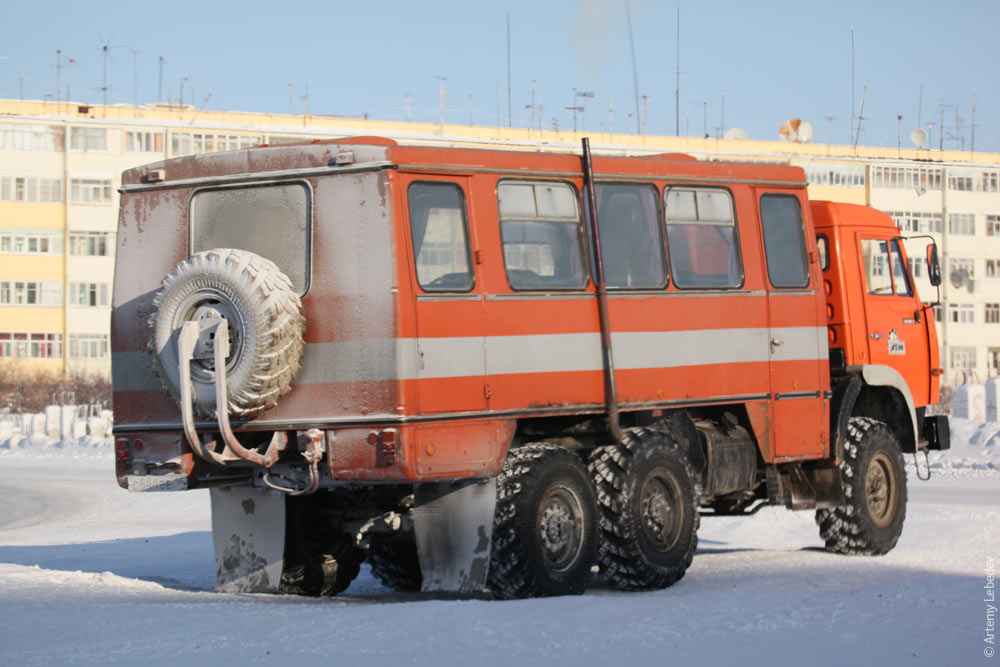 A future house. 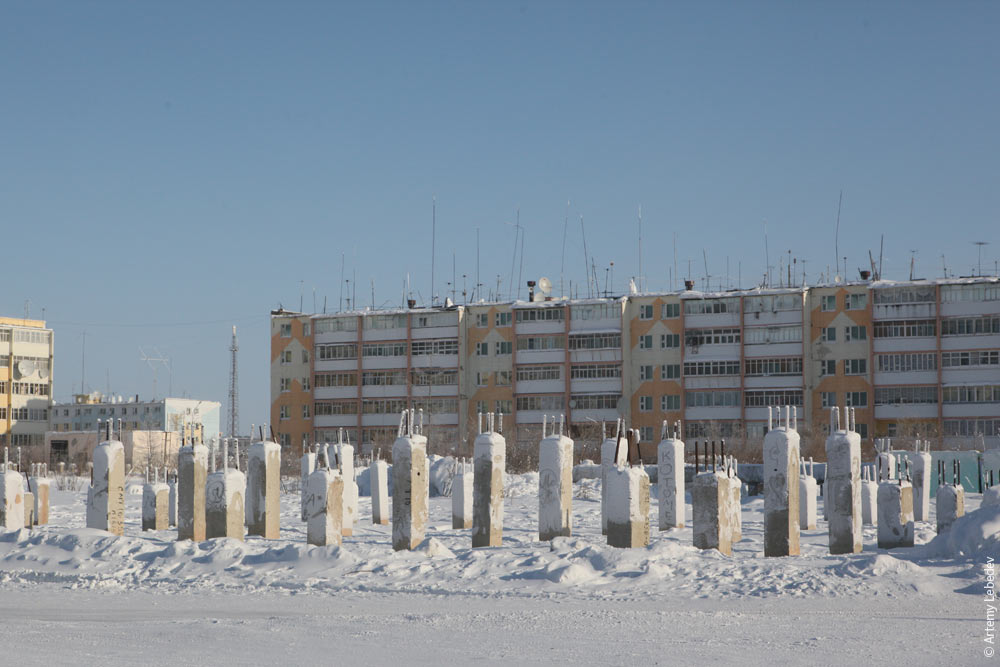 Here, I finally managed to find out what the space that would be a basement in a normal building is called. A crawlspace. That’s what. 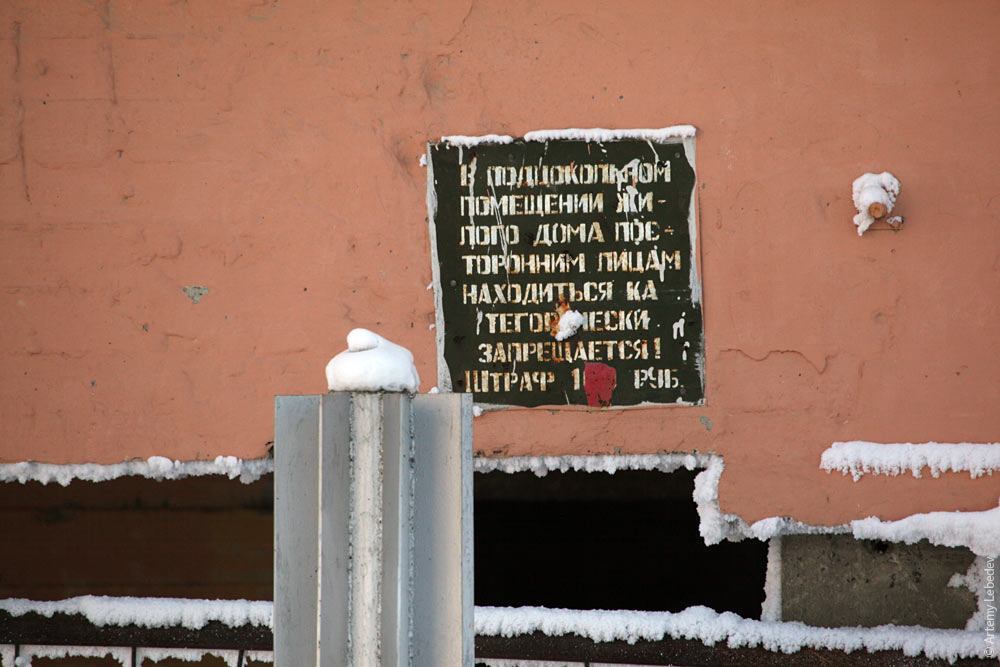 Unauthorized entry into a residential building crawlspace is expressly prohibited. Fine 1** rub. Trash dumpsters. 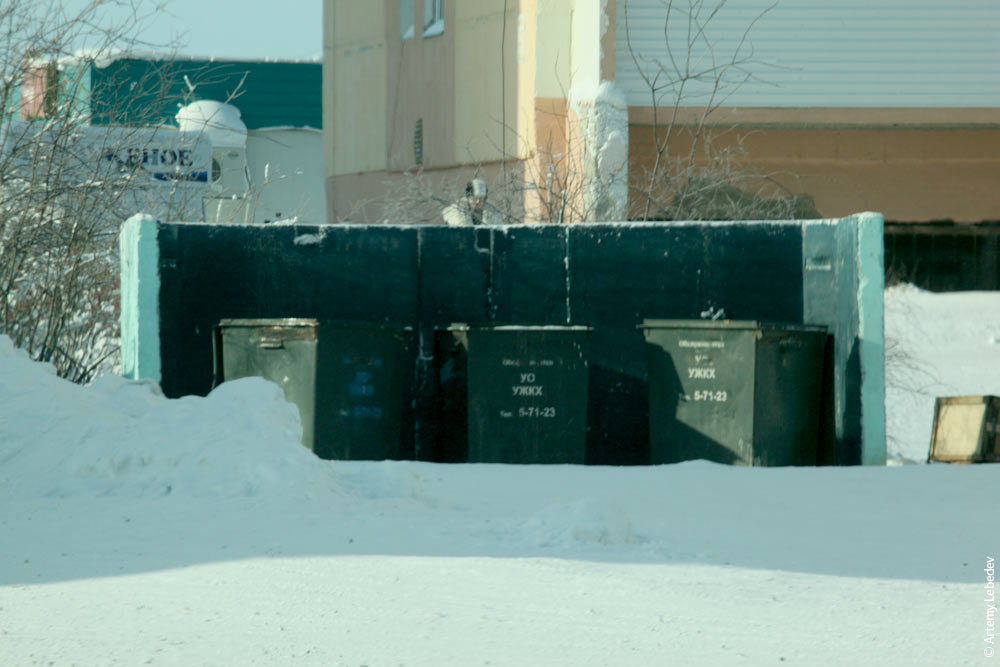 The only interesting trash can in the entire town (the town is three blocks wide, mind you): a devil with a top hat panhandling by the “Rus’” store. 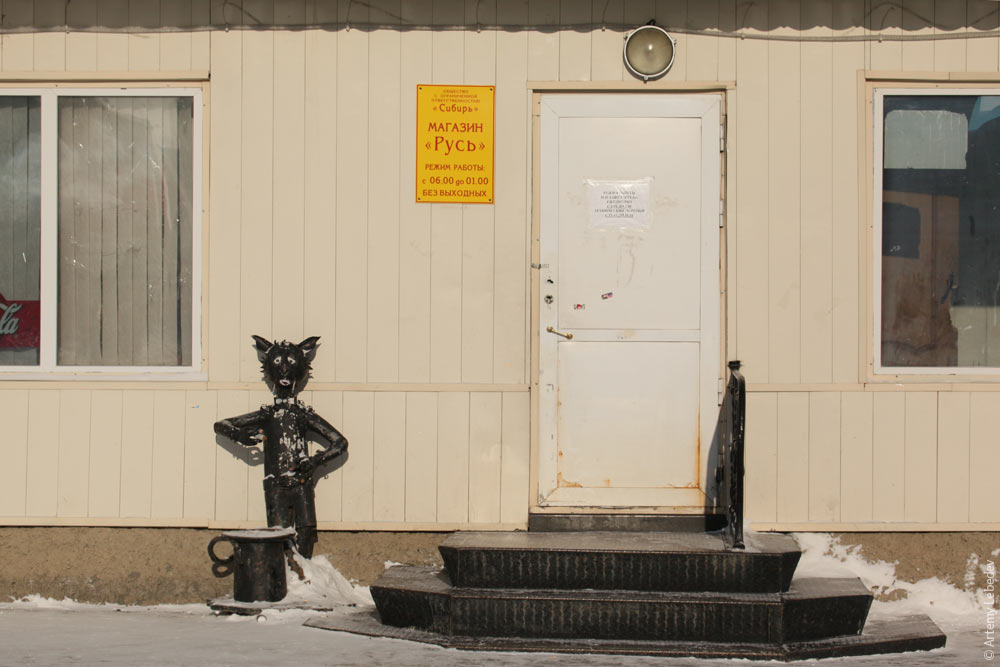 The residents of Udachny generally hold beauty in great esteem. Take the snow sculptures, for instance. 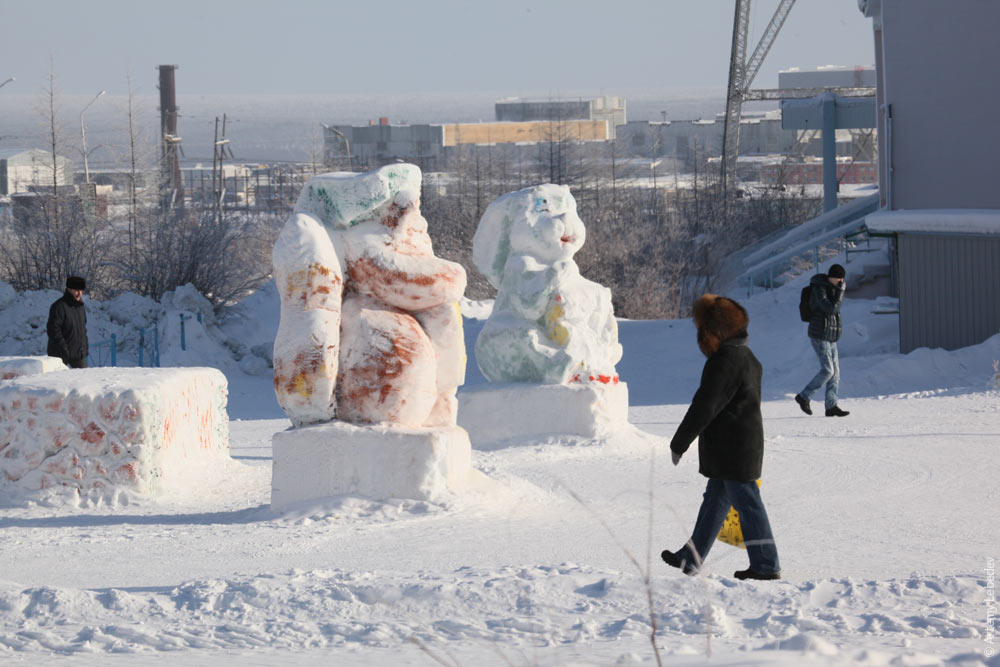 Or the hunter and the beauty. 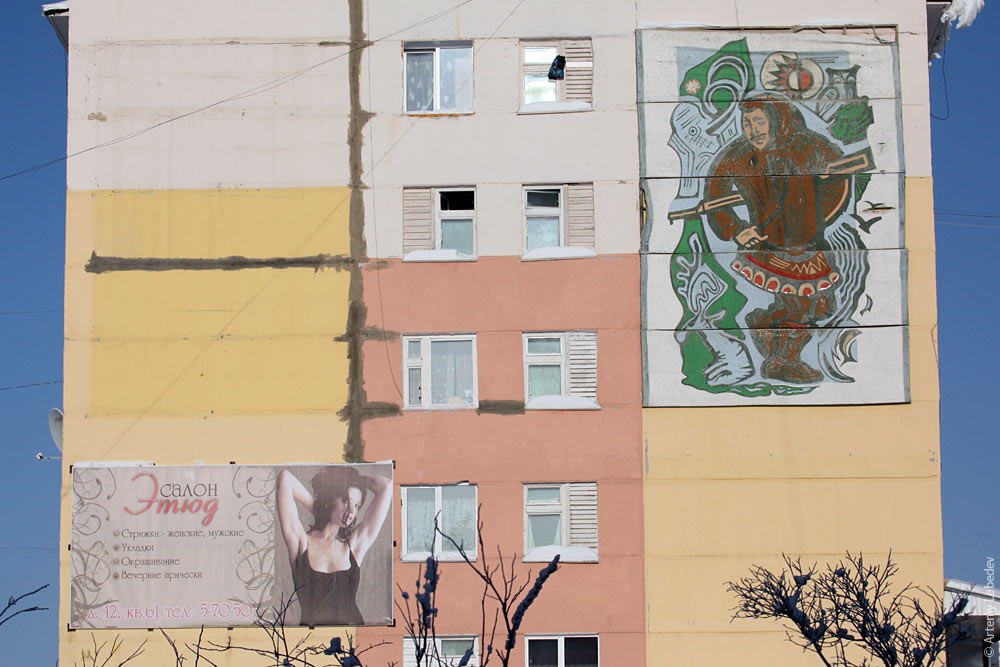 Etude Salon. Haircuts for men and women. Styling. Hair color. Hairstyles for special occasions Udachny is a city with an unparalleled variety of antennas on its roofs. The local antennas can be studied in much the same way that some people study the carved wooden trims on doors and windows in Russian villages. 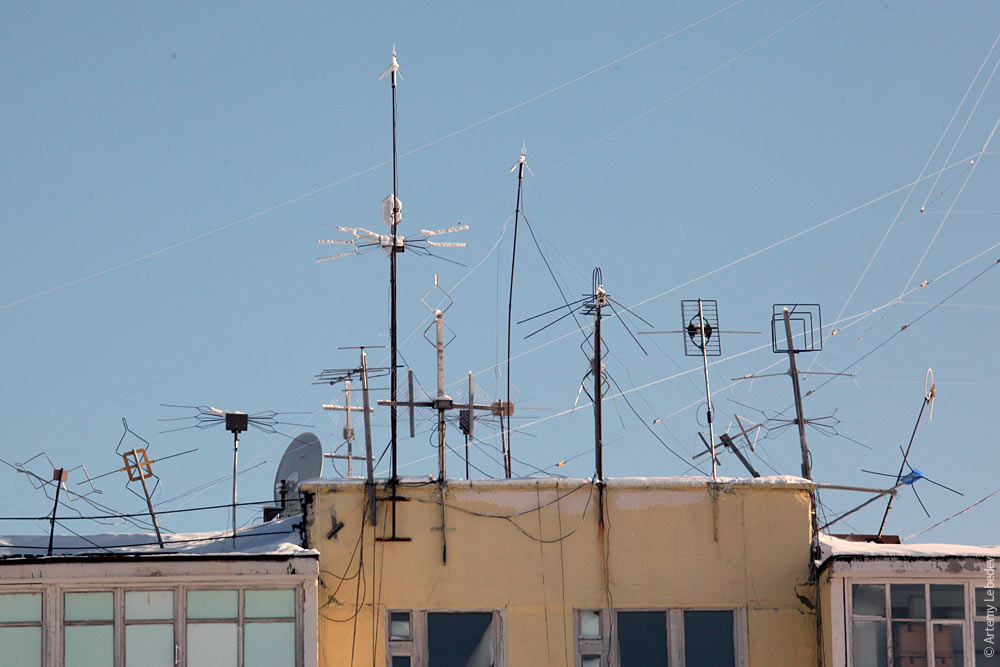 An intact Soviet artifact. 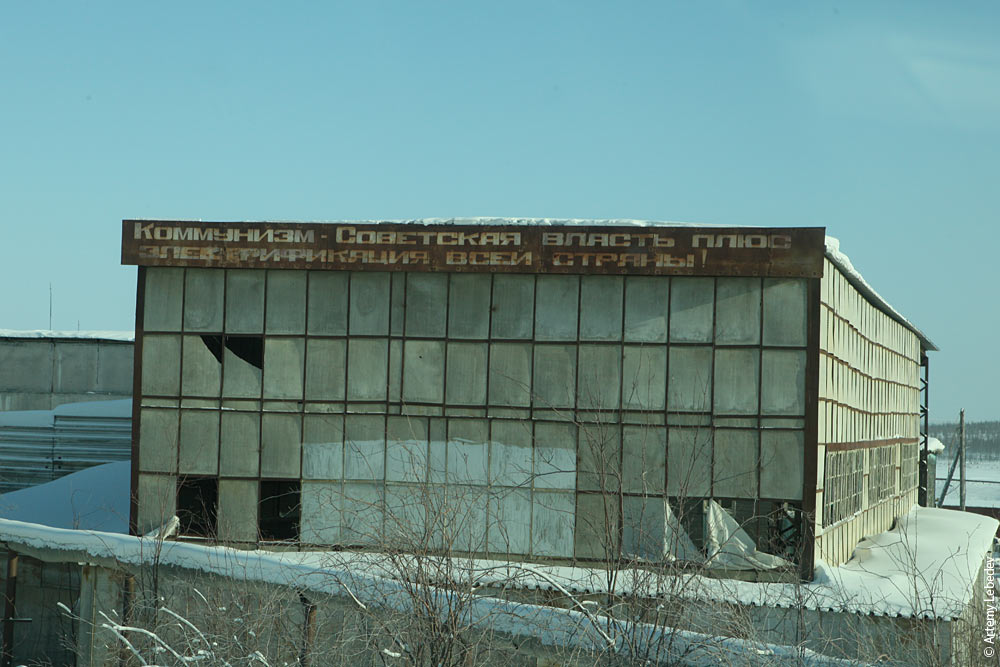 Communism—Soviet power plus the electrification of the entire country! There’s another diamond mine pit here, but unlike Mirny, this one is still in use. 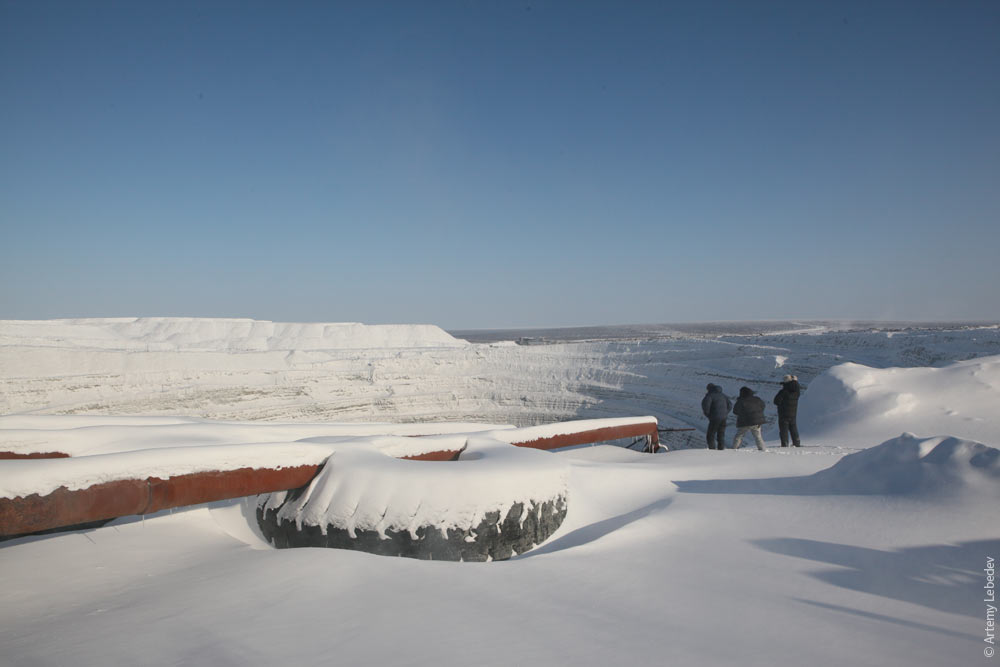 Shipping containers sit in front of practically every building. They were used to ship the residents’ meager belongings here and will eventually be used again to ship them back. Few people have any desire to remain here forever. 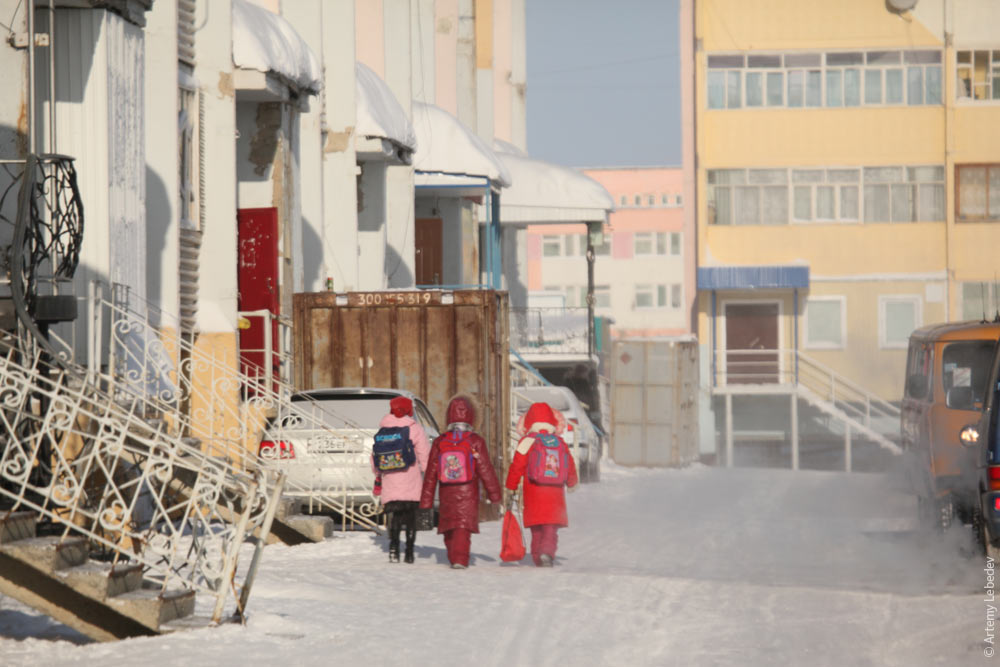 On the way to our presumable overnight stopover, the temperature hit the lowest point recorded during the entire expedition: −54 °C. It feels about the same as −30 °C, only on fast-forward. |